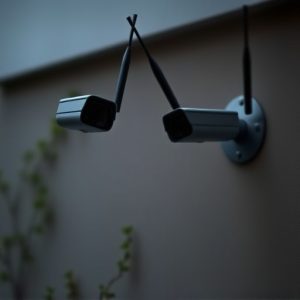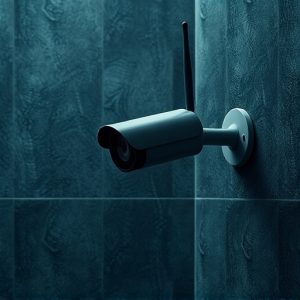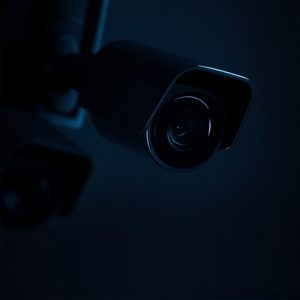Understanding Hidden Wireless Spy Camera Technology, Risks, and Legal Boundaries
Hidden wireless spy cameras offer advanced surveillance capabilities with high-definition video tran…….
Hidden wireless spy cameras offer advanced surveillance capabilities with high-definition video transmission and discreet placement options. These devices are equipped with motion activation and superior low-light recording for effective monitoring in various conditions. They utilize Wi-Fi communication to send footage without cables, ensuring secure data transfer through modern protocols. The small size of these cameras allows them to be hidden within everyday items like clocks or smoke detectors, reducing the risk of detection. They are essential tools for security and investigative work that demand stealth and precision. However, with their increasing sophistication, it's crucial to address privacy concerns by employing RF detectors for scanning spaces, reinforcing Wi-Fi security with measures like WPA3 encryption, replacing default passwords, and regularly updating firmware to safeguard against unauthorized surveillance. The legal use of these devices is bound by varying privacy laws that must be strictly adhered to, emphasizing the importance of ethical considerations and respecting individual rights in surveillance practices for maintaining trust and upholding privacy. Users should weigh the benefits of remote monitoring against potential invasions of privacy, ensuring transparency and legality in their use.
Hidden wireless spy cameras have emerged as a sophisticated tool in various sectors, from security surveillance to covert intelligence gathering. These devices seamlessly blend into environments, capturing footage without drawing attention. This article delves into the clandestine world of hidden wireless spy cameras, exploring their operations, technological advancements, and the challenges they pose to privacy. We will dissect the core components that enable these cameras to transmit video feeds wirelessly, scrutinize methods for identifying them, and address the critical legal and ethical considerations surrounding their use. Join us as we unravel the intricacies of this modern surveillance technology.
Unveiling the Stealthy Operation of Hidden Wireless Spy Cameras
Hidden wireless spy cameras represent a sophisticated tool in the realm of surveillance technology, designed to remain covertly operational while providing high-quality visual data. These devices operate by wirelessly transmitting footage captured to a remote receiver or directly to a server, enabling real-time monitoring from a distance without the need for physical access to the camera. The integration of advanced wireless communication protocols ensures that the transmitted video feed is secure and less susceptible to interception or signal loss, making it an invaluable asset for security and investigative purposes.
The stealthy nature of these cameras lies in their minute size and ability to blend into various environments seamlessly. They can be concealed within everyday objects like clocks, smoke detectors, or even picture frames, allowing users to maintain visual oversight without alerting the subject under surveillance. The wireless functionality further enhances this covert operation, as there is no visible cable infrastructure that could betray the camera’s presence. With the advent of motion-activated recording and sophisticated low-light capabilities, these hidden spy cameras can record crisp footage even in environments with minimal illumination, providing users with a powerful tool to monitor activities discreetly.
The Technology Behind Wireless Hidden Spy Cameras: A Deep Dive
Hidden wireless spy cameras represent a sophisticated evolution in surveillance technology, blending stealth with cutting-edge connectivity. These devices are equipped with advanced wireless communication modules that enable them to transmit video footage in real-time over Wi-Fi or other wireless networks without the need for physical cables. The integration of miniaturized digital imaging sensors and high-resolution lenses allows these cameras to capture crystal-clear images and videos, while their unobtrusive design ensures they remain inconspicuous in any environment. The technology behind these cameras is a blend of compact electronics, smart power management, and sophisticated video compression algorithms. This ensures that the transmitted data retains its quality while maintaining a low bandwidth requirement, making it ideal for covert operations without compromising the integrity of the surveillance. Additionally, the cameras often come with features like motion detection, remote activation, and secure encryption to protect against unauthorized access and ensure privacy. The wireless capabilities of hidden spy cameras also facilitate easy setup and positioning, as they can be placed virtually anywhere within the range of a Wi-Fi network and controlled remotely using smartphones or computers. This seamless integration of technology provides users with a powerful tool for security, surveillance, and monitoring applications, where discretion is paramount.
Identifying and Counteracting Hidden Wireless Spy Camera Threats
In an era where surveillance technology is increasingly sophisticated, understanding how to identify and counteract hidden wireless spy cameras is crucial for maintaining privacy. These devices are designed to be inconspicuous, often resembling everyday objects like clocks, smoke detectors, or even toys. They transmit video footage over a wireless network, which can be accessed by unauthorized individuals if not properly secured. To safeguard against such threats, it’s imperative to regularly scan your home or business environment with specialized RF (Radio Frequency) detectors that can locate these hidden transmitters. Additionally, securing your Wi-Fi network with strong encryption like WPA3 and changing default passwords on all connected devices can prevent unauthorized access to the footage. Regularly updating firmware on cameras and related equipment is also a pivotal step in ensuring these devices are not vulnerable to exploits that could turn them into covert spy cameras.
Furthermore, hidden wireless spy cameras may be employed in various settings, from personal spaces to sensitive corporate environments. The deployment of such devices requires vigilance and proactive measures. Employing signal detectors can help identify anomalies in the wireless spectrum that may indicate a hidden camera’s presence. It’s equally important to implement network monitoring tools that can alert you to any unknown devices connecting to your Wi-Fi. Educating yourself and staff about the risks associated with these devices and the signs to look for can serve as a first line of defense. By combining physical inspections, advanced detection equipment, robust network security practices, and ongoing education, one can significantly reduce the risk of falling victim to hidden wireless spy cameras.
Legal Considerations and Ethical Implications of Using Hidden Wireless Spy Cameras
The deployment of hidden wireless spy cameras raises significant legal considerations and ethical implications that must be carefully navigated. Legally, the use of such devices is often governed by privacy laws, which vary by jurisdiction. In many regions, surreptitious recording without consent from all parties present violates privacy rights and can lead to criminal or civil charges. Users must be thoroughly informed about the local regulations that apply to their intended surveillance activities to avoid unintentional infringement of laws designed to protect individuals’ privacy.
Ethically, the use of hidden wireless spy cameras extends beyond mere compliance with legal statutes. It involves a deep reflection on the values of respect for individual autonomy and the preservation of personal spaces. The ethical deployment of these devices should be justified by a compelling need, such as protection of property or safety, and must always prioritize the rights of individuals over the interests of surveillance. Transparency in the use of hidden wireless spy cameras is crucial to maintain trust and ensure that their application does not infringe upon the sanctity of private spaces. Users must weigh the benefits of remote monitoring against the potential harm to privacy and autonomy, upholding ethical standards in all forms of surveillance.


